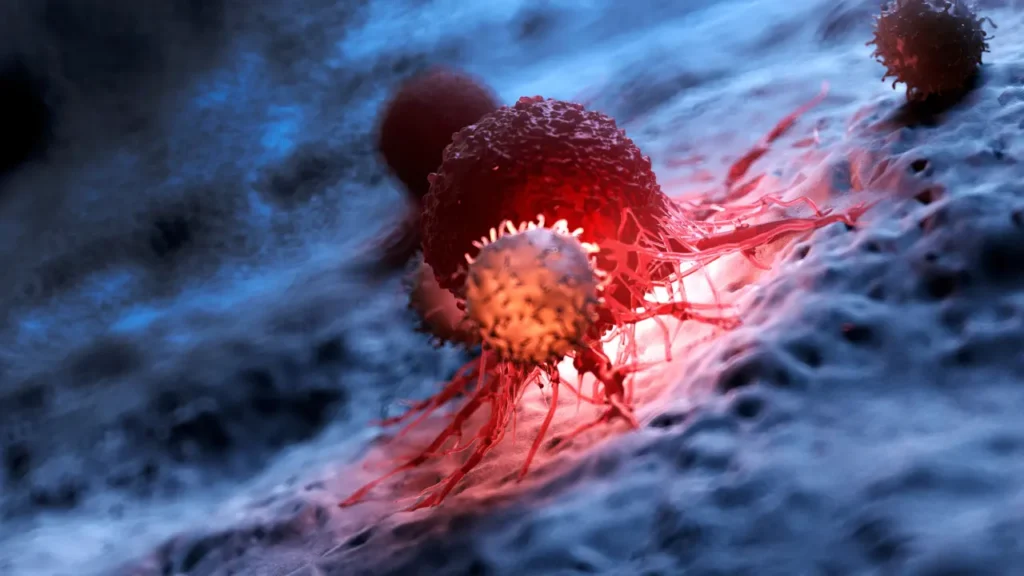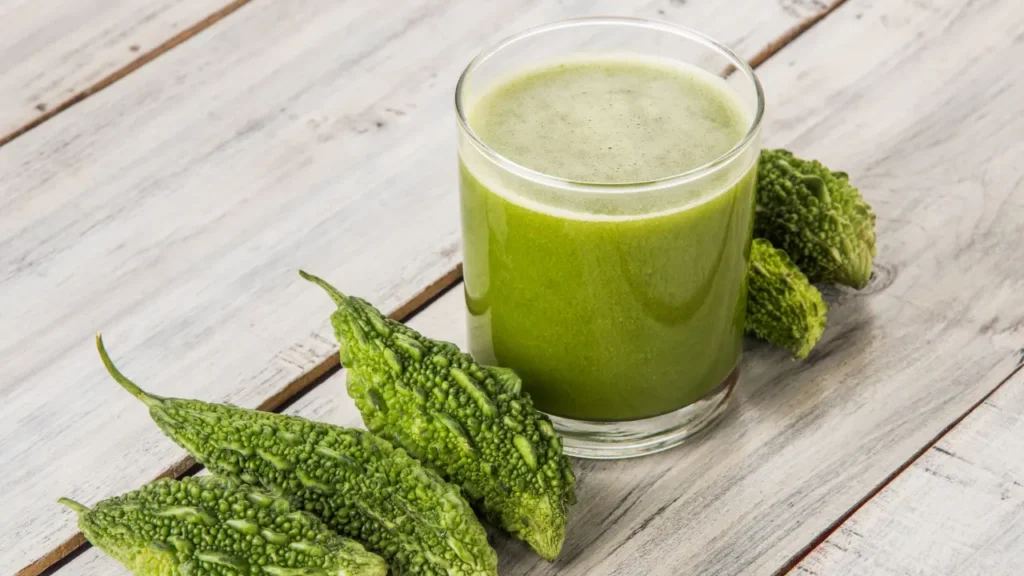A tropical and subtropical vine known as the bitter melon (Momordica charantia) is a member of the Cucurbitaceae family, also referred to as the cucumber, melon, or gourd family. Its distinct flavour and nutritious qualities make it a popular fruit in many Asian, African, and Caribbean cuisines. Traditional medicine has long utilized bitter melon, also known as bitter gourd or karela, to treat a variety of illnesses include diabetes, inflammation, and digestive problems.
Understanding the chemistry of bitter melon and its ingredients, as well as any potential health advantages, has been the subject of contemporary scientific research. The goal of this review is to present a thorough examination of the most recent data regarding the characteristics, health advantages, recommended dosage, adverse effects, potential drug interactions, and responsible usage of bitter melon as a nutritional supplement.
You May Also Like:
Should You Try CBD for Focus? Here Are the Facts.
Sunmed CBD vs. Partnered Process CBD: Finding the Best CBD for Sleep
Bitter Melon: Benefits, Dosage, Side Effects, Drug Interactions, and Other Important Information is an original (NootropicsPlanet) article.
Nature of Bitter Melon
A perennial vine known as bitter melon (Momordica charantia) bears an unusual, oblong-shaped fruit with a notably bitter flavour. The fruit has a rough, warty skin and is green when young, becoming yellow-orange when ripe. In Asia, Africa, and the Caribbean, bitter melon is widely cultivated and used as a vegetable in a variety of traditional dishes. The herb is also used to cure a range of illnesses in traditional medical practices like Ayurveda and Traditional Chinese Medicine.
Health Benefits of Bitter Melon
The possible health advantages of bitter melon and its bioactive components have been the subject of numerous studies. Below are some of the topics that have received the most research.
Effects of Antidiabetics: Several studies have provided scientific proof to support the anti-diabetic properties of bitter melon. It has been used to treat diabetes for centuries. Charantin and specific proteins such polypeptide-p, as well as cucurbitane-type triterpenoids, are primarily responsible for the bitter melon’s hypoglycemic effects. These substances have been shown to increase glucose uptake in peripheral tissues and stimulate insulin production. They also restrict intestinal glucose absorption. All of these actions contribute to better glycemic control.
Anti-Cancer Features: The possible anticancer effects of bitter melon have also attracted interest. The cucurbitane-type triterpenoids found in bitter melon are primarily responsible for the fruit’s anticancer properties. These compounds have been proven to restrict angiogenesis, induce apoptosis in a variety of cancer cell lines, and decrease cell proliferation. Additionally, the bitter melon protein MAP30 has proven to have antitumor properties by inducing apoptosis and preventing tumour cell invasion.
Immunomodulatory and Anti-inflammatory Effects
The pathophysiology of many chronic diseases is largely influenced by inflammation, and bitter melon has been shown to have anti-inflammatory and immunomodulatory characteristics. These outcomes are ascribed to the bitter melon’s cucurbitane-type terpenoids and steroidal saponins. The generation of pro-inflammatory cytokines is inhibited, nuclear factor-kappa B (NF-B) activation is suppressed, and immune cell function is modulated by these substances, which reduce inflammation and enhance immunological responses.
Numerous diseases have been linked to oxidative stress, and bitter melon has been found to have antioxidant properties. Phenolic substances such gallic acid, chlorogenic acid, and catechin support the bitter melon’s antioxidant capacity. These substances have been demonstrated to neutralize free radicals and prevent the oxidation of lipids, hence lowering oxidative stress. Additionally, due primarily to its anti-inflammatory and antioxidant properties, bitter melon has shown hepatoprotective effects in animal models.

Chemistry of Bitter Melon
Several groups of bioactive substances found in bitter melon can be distinguished, including cucurbitane-type triterpenoids, steroidal saponins, phenolic substances, and proteins. The most prevalent and well researched class of chemicals in bitter melon are cucurbitane-type triterpenoids, with momordicin and charantin serving as the two key representatives. These triterpenoids are said to offer a wide range of biological functions, including antidiabetic, anticancer, anti-inflammatory, and antibacterial characteristics. They also give the fruit its bitter flavour.
Another significant class of chemicals present in bitter melon is known as steroidal saponins, which includes momordicoside. Numerous pharmacological effects of these saponins include immunomodulatory, antiviral, and anti-inflammatory actions. In addition, bitter melon contains phenolic substances with antioxidant qualities, such as gallic acid, chlorogenic acid, and catechin. Bitter melon also has proteins such MAP30, which has antiviral, anticancer, and immunomodulatory properties, in addition to these chemical components.
Physiological Mechanisms of Action
Its bioactive substances, such as cucurbitane-type triterpenoids, steroidal saponins, phenolic compounds, and proteins, exhibit bitter melon’s health advantages through a variety of physiological pathways. The next section discusses some of the main methods of action.
9.1 Diabetes-Related Mechanisms: According to certain studies, bitter melon can improve pancreatic -cells’ ability to secrete insulin, improving blood glucose control. This effect is thought to be mediated by the cucurbitane-type triterpenoid charantin and the protein polypeptide-p. Additionally, bitter melon boosts the expression of glucose transporters (like GLUT4) to increase glucose uptake in peripheral tissues like skeletal muscles and adipocytes. The activity of intestinal glucose absorption enzymes like -glucosidase is also inhibited by bitter melon, which lowers postprandial hyperglycemia.
Anticancer Mechanisms 9.2: The primary causes of bitter melon’s anticancer properties are its cucurbitane-type triterpenoids and the protein MAP30. By triggering intrinsic and extrinsic apoptotic pathways, these substances have been demonstrated to cause apoptosis (programmed cell death) in a variety of cancer cell lines. By stopping the cell cycle at particular milestones, bitter melon also reduces the growth of cancerous cells. By reducing the expression of pro-angiogenic molecules like vascular endothelial growth factor (VEGF), it also inhibits angiogenesis (the creation of new blood vessels).
9.3 Mechanisms that Reduce Inflammation and Modulate Immunity: Tumour necrosis factor (TNF), interleukin-6 (IL-6), and interleukin-1 (IL-1) are only a few of the cytokines that bitter melon modulates in order to have its anti-inflammatory and immunomodulatory effects. These effects are brought on by bitter melon’s cucurbitane-type triterpenoids and steroidal saponins. Additionally, bitter melon prevents the nuclear factor-kappa B (NF-B) signalling pathway, a crucial regulator of inflammation and immune responses, from being activated.
Antioxidant Mechanisms 9.4: By scavenging free radicals and preventing lipid peroxidation, phenolic components in bitter melon, such as gallic acid, chlorogenic acid, and catechin, exhibit antioxidant properties. These substances also increase the activity of natural antioxidant enzymes including glutathione peroxidase (GPx), superoxide dismutase (SOD), and catalase, lowering oxidative stress and defending cells from harm.

Optimal Dosage of Bitter Melon
Age, health status, and the intended therapeutic aim all affect the ideal bitter melon dosage. In general, clinical trials for the treatment of diabetes have utilized a daily dosage of 50–100 mL of fresh bitter melon juice or 500–1000 mg of dried bitter melon powder. But before using bitter melon as a dietary supplement, it is advisable to speak with a healthcare provider because the ideal dosage may change depending on each person’s needs.
Even though eating bitter melon as part of your diet in moderation is generally regarded as safe, eating too much of it can have negative effects. Diarrhea, hypoglycemia, and stomach discomfort are a few of the side effects that have been observed. Furthermore, it is not well known whether bitter melon is safe to consume while pregnant or nursing. Due to the potential risk of uterine contractions and decreased milk supply, it is advised that pregnant and nursing women avoid consuming bitter melon in high quantities.
Side Effects of Bitter Melon
While moderate consumption as part of a balanced diet is generally regarded as safe, an excessive amount can have negative effects. The following are some of the most typical negative effects of eating bitter melon:
Gastrointestinal Pain: Particularly when ingested in excessive quantities, bitter melon can produce gastrointestinal discomfort such as abdominal pain, bloating, and flatulence. The fruit’s bitter flavour and the presence of certain bioactive chemicals may be to blame for these negative effects.
Diarrhea: Due to its laxative impact, eating a lot of bitter melon may cause diarrhea. Steroid saponins, which have been shown to stimulate intestinal motility and encourage the production of water and electrolytes in the gut, are most likely to blame for this side effect.
Hypoglycemia: Because bitter melon has hypoglycemic qualities, excessive consumption may cause hypoglycemia in some people, especially those who have diabetes or take anti-diabetic medications. Hypoglycemia can cause symptoms such as disorientation, perspiration, irritability, and dizziness. When consuming bitter melon, diabetics should closely monitor their blood sugar levels and adjust their medication dosage as necessary.

Potential Substance Interactions
Bitter melon may interact with specific drugs and chemicals, changing their efficacy or producing undesirable side effects. Among the possible interactions are:
5.1 Anti-diabetic Drugs: Bitter melon may enhance the efficacy of anti-diabetic drugs like insulin and sulfonylureas because of its hypoglycemic effects. Hypoglycemia, which could develop from this combination, would call for adjusting the medication’s dosage.
5.2 Substrates of Cytochrome P450: According to several reports, bitter melon inhibits cytochrome P450 enzymes, which are essential for the metabolism of drugs. Some medications that are substrates for these enzymes may be affected by this interaction, altering drug concentrations and possibly producing unwanted effects. Statins, anticoagulants, and antifungal medications are a few examples of drugs that could be impacted.
Responsible Use and Future Perspectives
Long used traditionally, bitter melon has many potential health advantages. However, it is crucial to use this dietary supplement responsibly, taking into account any possible side effects and drug interactions. People who are considering using bitter melon should speak with a healthcare practitioner to identify the proper dosage and ensure safe and efficient use.
More study is required to completely understand the mechanisms underlying the health advantages of bitter melon and its components. Also, well-designed clinical trials are necessary to establish standardized dosage recommendations. They can also verify the bitter melon’s therapeutic potential. The bitter melon plant may become a beneficial dietary supplement and therapeutic agent. This could help prevent and treat numerous ailments as we learn more about its chemistry and biological functions.
Bitter Melon:
Conclusion
Bitter melon is a captivating specimen, blending traditional wisdom with modern scientific exploration. Its unique characteristics, from the distinctive fruit to its global culinary presence, make it a focal point in treating ailments like diabetes and inflammation. Unveiling its health benefits, we discovered anti-diabetic and anticancer properties driven by bioactive components.
Exploring bitter melon’s chemistry and physiological mechanisms of action showcases its diverse health advantages. As responsible usage gains importance, consulting healthcare providers becomes crucial, pointing towards a future where bitter melon may play a pivotal role in holistic well-being.

References:
- LiverTox: Clinical and Research Information on Drug-Induced Liver Injury [Internet]. Retrieved from: https://www.ncbi.nlm.nih.gov/books/NBK590483/
- Momordica charantia and type 2 diabetes: From in vitro to human studies. Retrieved from: https://www.ncbi.nlm.nih.gov/pmc/articles/PMC4708999/
- Bitter melon (Momordica charantia): a natural healthy vegetable. Retrieved from: https://www.tandfonline.com/doi/full/10.1080/10942912.2018.1446023#:~:text=Moreover%2C%20in%20skeletal%20muscle%20bitter,and%20the%20expression%20of%20mRNA.&text=BM%20considerably%20declined%20the%20level,and%20epididymal%20white%20adipose%20tissue.
Important Note: The information contained in this article is for general informational purposes only, and should not be construed as health or medical advice, nor is it intended to diagnose, prevent, treat, or cure any disease or health condition. Before embarking on any diet, fitness regimen, or program of nutritional supplementation, it is advisable to consult your healthcare professional in order to determine its safety and probable efficacy in terms of your individual state of health.
Regarding Nutritional Supplements Or Other Non-Prescription Health Products: If any nutritional supplements or other non-prescription health products are mentioned in the foregoing article, any claims or statements made about them have not been evaluated by the U.S. Food and Drug Administration, and such nutritional supplements or other health products are not intended to diagnose, treat, cure, or prevent any disease.


